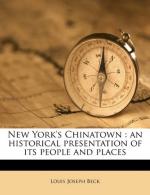|
This section contains 1,732 words (approx. 6 pages at 300 words per page) |

|
Foodstuffs. The old reliable foodstuffs—millet, rice, pork, beans, chicken, plums, spring onions, and bamboo shoots—remained popular in Tang times (618-907). Wheat vastly increased in importance, too. When the Tang dynasty came to power and war-like Turkish nomads of the steppes became allies of the new empire, more-refined foods were adopted from foreign lands. Little cakes fried in oil became particularly popular. Recipes for these cakes may have come from India. Wine was imported from the Tarim River basin, kohlrabi (cabbage) was imported from Europe by way of the Silk Road, and pistachio nuts were brought from Persia. By Song times (960—1279), rice became more essential, reaching its modern level of importance as the great staple of China; while wheat was more common in the south, flour was becoming a vital food too. The poor in South China, unable to find money to buy rice...
|
This section contains 1,732 words (approx. 6 pages at 300 words per page) |

|



